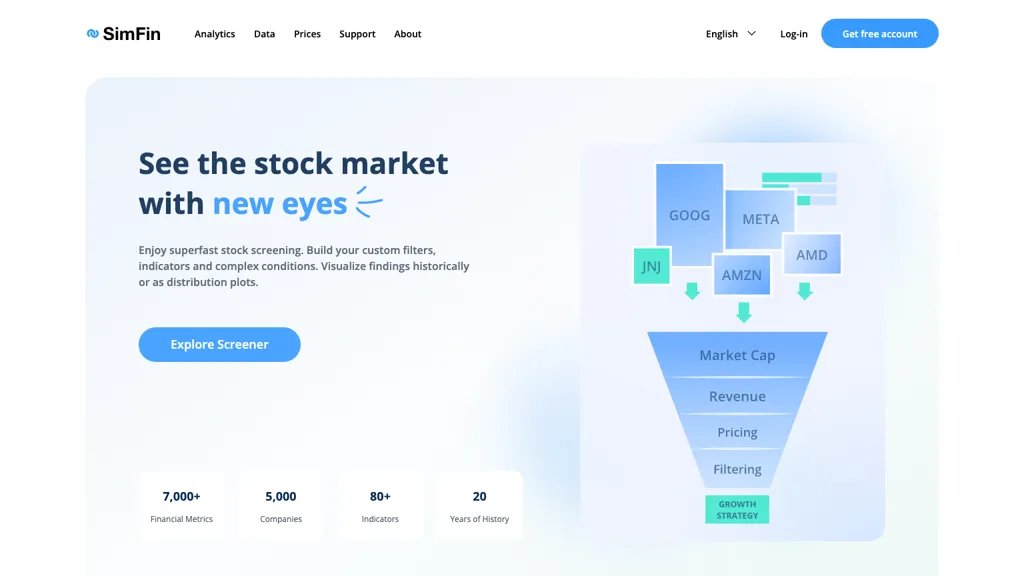20 Top Suggestions On Choosing AI Stock Picker Analysis Websites
20 Top Suggestions On Choosing AI Stock Picker Analysis Websites
Blog Article
Tips To Help You Assess The Costs And Pricing Of Ai Trading Platforms That Forecast Or Analyze Price Of Stocks.
It is crucial to evaluate the cost and pricing of AI trading platforms that predict/analyze the prices of stocks. This will allow you to keep out any costs that are not obvious. Pricing structures can vary greatly and it is crucial to know what you are getting for your money. Below are the top 10 methods to evaluate the pricing and costs of these platforms.
1. Learn about the Pricing Model
Subscription-based: Check if the platform charges monthly or annually, and also what features are included in each tier.
Pay-per-use : Confirm that the platform charges you according to the usage (e.g. transactions, requests for information, or forecasts).
Freemium Model: Examine whether the platform has a free model with only a few options. The premium features are billed for.
2. Compare Pricing Tiers
Compare features across each pricing level (e.g. professional, basic).
Scalability: Make sure that the pricing tiers align with your needs, whether you're an individual trader a professional or an institutional member.
Upgrade flexibility: See whether it's possible to upgrade or lower the plan based on your changing requirements.
3. Evaluate Hidden Costs
Data charges: Find out if are required to pay to access premium data.
Brokerage fees: Check whether the platform is charging additional charges for trade execution or integration with brokers.
API usage: Check if there are extra costs to access APIs or for high-frequency API use.
4. Demos as well as Free Trials
Trial period. Look for platforms offering the option of a demo or trial so that you can test their features out before committing.
Trial limitations: Determine if the free trial includes all features or is limited in its functionality.
Option to not commit If you do not like the service, you are able to end the subscription at no cost.
5. Find the most recent discounts and offers
Annual discounts: Verify if the platform offers discounts on annual subscriptions when compared to monthly plans.
Referral programs. Find out if the platform offers discounts or credits to refer users.
Institutional pricing: If you're part of a larger organization, inquire about institutional or bulk pricing.
6. ROI (Return on Investment) How do you evaluate the ROI?
Cost vs. Value: Determine whether the capabilities and forecasts of the platform justifies its cost. Does it, for example aid you in making a better trade decisions or help you save time.
Performance track record: Research the platform's rate of success or user reviews to assess its potential ROI.
Alternative costs: comparing prices for the platform with the cost that might be incurred if it is not used (e.g. lost opportunities, manual data analysis time).
Review Cancellation/Refund Policies
Cancellation Terms: You can cancel without hidden charges or penalties.
Refund policy: Check whether the website offers refunds for unutilised parts of your subscription.
Auto-renewal : Find out if your subscription is automatically renewed by the platform and learn how to opt out.
8. Examine Pricing Transparency
Clear pricing: Make sure that the pricing of the platform is clear and includes no hidden costs.
Customer Support: Contact customer support for clarification of any unclear pricing information or additional costs.
Terms of service: Read the conditions of service to know any long-term commitments or penalties.
9. Compare with Competitors
Check out the features and prices on various platforms to find the most competitive price.
Review of user reviews: Read feedback from users and find out if other users think this platform is worth it.
Market positioning: Check if it is priced at an upper-end, mid-range or low-cost alternative and whether it's in line with what you would expect.
10. Estimate Long-Term costs
Price increases: Find out whether and how often the platform raises its prices.
Updates to features: See whether your current plan has new features or requires an upgrade.
Scalability costs: Ensure the pricing of your platform is reasonable as your trading activity or data needs grow.
Bonus Tips:
Free trials of various platforms are available to try and compare the advantages and performance of different platforms.
Negotiate the price: If you are a frequent user or a member of a large company Ask about special pricing or discounts.
Check for educational resources There are some platforms that offer free educational tools or resources that add value over their core features.
If you follow these guidelines, you'll be able to assess the cost, pricing and features of AI stock trading platforms. A good-quality platform will offer the right balance between cost and performance, which will help you to maximize your trading performance. See the top investing ai for website tips including best ai for trading, ai trading tools, ai stock trading, trading ai, chart ai trading assistant, stock ai, chart ai trading assistant, ai investment app, market ai, ai stocks and more.
Top 10 Tips On Assessing The Transparency Of Ai Stock Predicting/Analyzing Trading Platforms
Transparency is a key factor when evaluating AI-driven trading as well as platform for stock predictions. It allows users to trust the operations of the platform and comprehend the process of making decisions, and verify the accuracy of predictions. These are the 10 best methods to assess the degree of transparency in these platforms.
1. The AI Models Explained in clear terms
Tips: Make sure the platform provides a clear explanation of the AI models and algorithms that are used to make predictions.
Why? Understanding the underlying technology helps users assess its reliability.
2. Disclosure of data sources
TIP: Determine if the platform discloses the sources of its data (e.g., historical stock data, news, social media, etc.).
What's the reason? Knowing the sources of data ensures that the platform is based on reliable and comprehensive data.
3. Backtesting and Performance Metrics
Tips - Search for clear reporting on the performance metrics like the accuracy rate, ROI, and backtesting.
What is the reason? It lets users verify their past performance as well as the efficacy of their platform.
4. Real-time notifications, updates, and updates
Tip. Check if the platform provides real-time data as well as notifications about trades and modifications to the system, like trading predictions.
Why is this? Real-time transparency enables users to be updated on every critical action.
5. Limitations: Communication that is open
Tip: Check if the platform is openly discussing the limitations and risks of its predictions and trading strategies.
Understanding the limitations of an item builds confidence, which allows users to make better decisions.
6. Raw Data Access for Users
Tips: Find out if the AI model can be used to access raw data as well as intermediate results or both.
What's the reason? Users can conduct their own analyses and verify their predictions using the raw data.
7. Transparency of Costs and Fees
Make sure the platform clearly states all fees for subscriptions and any hidden charges.
Transparent pricing lowers the chance of unexpected expenses and builds confidence.
8. Regularly reporting and performing audits
Tip: Check if the platform is regularly updated with reports or is subject to audits by a third party to verify the operation and efficiency of the platform.
Independent verification increases credibility and accountability
9. Predictions that can be explained
Tips Check to see whether there is an information on how the platform makes specific predictions and suggestions (e.g. feature priority, decision trees).
Explainability is a software that assists users in understanding AI-driven decision-making.
10. User Feedback Channels and Support
Tips - Make sure the platform provides open ways to receive feedback and assistance from users and respond in a transparent manner to user complaints.
What is the reason? It shows the commitment to the transparency of users and their satisfaction.
Bonus Tip Regulatory Compliance
Make sure the platform is compliant with the relevant financial regulations and discloses its compliance status. This provides an extra layer of transparency.
Through analyzing these functions, you can decide whether or not the AI trading platform or predictions of stocks are reliable. It will then be able to make well-informed choices and be confident in its abilities. Read the best ai stock trader tips for website advice including ai stock predictions, how to use ai for stock trading, best ai stocks, best ai stocks, ai software stocks, ai options trading, best ai trading platform, best ai penny stocks, stock predictor, ai tools for trading and more.